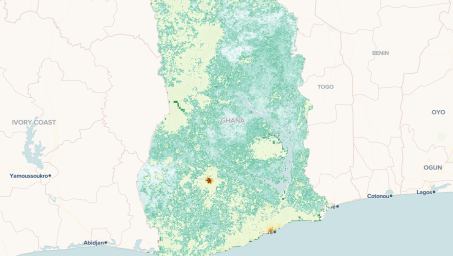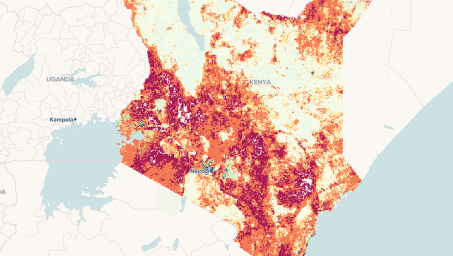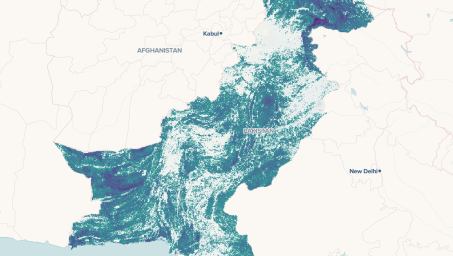Vaccinating the World’s Most Vulnerable – A Subnational Approach
Published on 18 February 2022
Overview
While sufficient global vaccine supply for low and lower-middle-income countries continues to be an ongoing challenge, the investment required for countries to be able to effectively distribute the vaccines on the ground should not be underestimated.
A total of 10.9 billion doses of COVID-19 vaccine have been administered globally[1], but only 1 percent of those have been administered in low-income countries. While sufficient global vaccine supply for low and lower-middle-income countries continues to be an ongoing challenge, the investment required for countries to be able to effectively distribute the vaccines on the ground should not be underestimated.
The costs of falling short in this effort are large: without adequate in-country mechanisms vaccines with short shelf-lives will remain unused and low and lower-middle income countries will continue to fall behind in the recovery.
Low-income countries face multiple challenges to achieving an equitable distribution of vaccines[2], including identifying and locating high-risk and vulnerable groups, securing vaccine storage, scaling human resources, planning delivery, and generating demand and uptake[3]
Two actions are key to addressing vaccine implementation challenges within countries:
- Understanding vulnerable groups in the society using multi-dimensional data.
- Developing prioritization options to support national level vaccine rollout and vaccine microplanning.
UNDP’s forthcoming Hyperlocal Vaccine Analytics tool seeks to help policy makers identify vulnerable groups using a combination of data, including geospatial data, and identify options to support national level vaccine rollout and vaccine microplanning. With the tool, users will be able to explore the specific conditions in their countries, including road networks, health infrastructure, electricity access, weather forecasts, migration patterns and conflict data - and thereby target efforts to areas where they are needed the most.
The approaches described here can help bring together a large amount of information and parameters into a single tool, and thereby facilitate an effective COVID-19 vaccination effort which targets the most vulnerable and leaves no one behind.
The Vaccine Equity Hyperlocal Tool is now hosted on the UNDP GeoHub.
Select one of the five countries to explore the data insights.
Note: The designations employed and the presentation of material on this map do not imply the expression of any opinion whatsoever on the part of the Secretariat of the United Nations or UNDP concerning the legal status of any country, territory, city or area or its authorities, or concerning the delimitation of its frontiers or boundaries.
Firstly, mapping vulnerability in relation to the COVID-19 pandemic is an important base to understand how to effectively prioritize and distribute often limited COVID-19 vaccines. Prioritizing communities that are highly vulnerable helps reduce the spread of the COVID-19 virus. A multidimensional vulnerability scoring considers specific parameters of the country context and the socio-economic, demographic, healthcare access, geographic and epidemiological factors that determine affected populations. These geospatial indicators can provide granular, community-level information and quantifiable scales for prioritization and location for vaccination efforts.
The vulnerability scoring is customized to the country context. It should be informed both by country specific factors affecting vulnerability and data availability. An example of the sub-components feeding into the vulnerability scoring can be seen in Figure 1 below. Additionally, the sub-components can be weighted according to importance and impact on vulnerability.

Fig. 1: Multidimensional Vulnerability Scoring
Secondly, using a geospatial software to create an analytical tool that combines multiple indicators into one map, can help decision makers target vaccination efforts where they are most needed. The Hyperlocal Vaccine Analytics tool (example in Figure 2) can load the vulnerability indicator as well as additional information on demographic characteristics, information access, vaccination likeliness and geographical features, bringing the multi-dimensions of a successful vaccination rollout into one space for easy analysis and action. Subnational data gathered through surveys (e.g., the socio-economic vulnerability of households) combined with information on road networks, electricity access, weather forecasts, migration patterns and conflict data present an opportunity to assess inequity across several dimensions. This in turn will allow policy makers to understand the context better and identify potential barriers to an equitable distribution of vaccines. For example, the challenges of accessing the high altitudinal landscapes within Hindu-Kush Himalayan regions, such as Nepal, Bhutan, Pakistan, and Afghanistan, or remote areas engulfed in war, instability, and conflict such as areas of Yemen, Syria, South Sudan, and Ethiopia[4].
Figure 3 shows how the tool can be applied in a country context. Using Ghana as an example, this the figure shows multiple layers of data at the granular level of 1km2 to provide hyperlocal, community level micro-planning information.

Fig.2: Hyperlocal Vaccine Analytics Tool
Note: The designations employed and the presentation of material on this map do not imply the expression of any opinion whatsoever on the part of the Secretariat of the United Nations or UNDP concerning the legal status of any country, territory, city or area or its authorities, or concerning the delimitation of its frontiers or boundaries.
Figure 3 shows three different indicators combined into the tool: vaccination likeness , information access score and community vulnerability. The Upper West region (highlighted in yellow) scores high on all three indicators and is therefore an area that requires additional attention for an effective vaccine rollout.

Fig. 3: Actionable Insights from the Tool
Note: The designations employed and the presentation of material on this map do not imply the expression of any opinion whatsoever on the part of the Secretariat of the United Nations or UNDP concerning the legal status of any country, territory, city or area or its authorities, or concerning the delimitation of its frontiers or boundaries.
The tool is customizable and can include the most important parameters relevant for each country. For example, additional information on road network, health infrastructure, electricity access, weather forecast, migration patterns and conflict data can be included to provide the needed insights.
With adverse health events disproportionately affecting vulnerable communities, we need to ensure that COVID-19 vaccination efforts do not exacerbate the inequalities that we have seen widen during the pandemic. Analytical tools and data driven solutions are key in this transition and can support policy makers to take bold action towards a recovery that makes the world more equal.
References
[1] Global Dashboard for Vaccine Equity (https://data.undp.org/vaccine-equity/) – data from Our World in Data
[2] Twumwaa et. al (2021) COVID-19 Vaccination in Lower-Middle Income Countries: National Stakeholder Views on Challenges, Barriers, and Potential Solutions.
[3] WHO (2021) Guidance on operational microplanning for COVID-19 vaccination.
[4] Margaret, B. (2021) Britain to Push for COVID-19 Cease-fires to Get Vaccine to Conflict Zones. https://www.voanews.com/covid-19-pandemic/britain-push-covid-19-cease-fires-get-vaccine-conflict-zones






